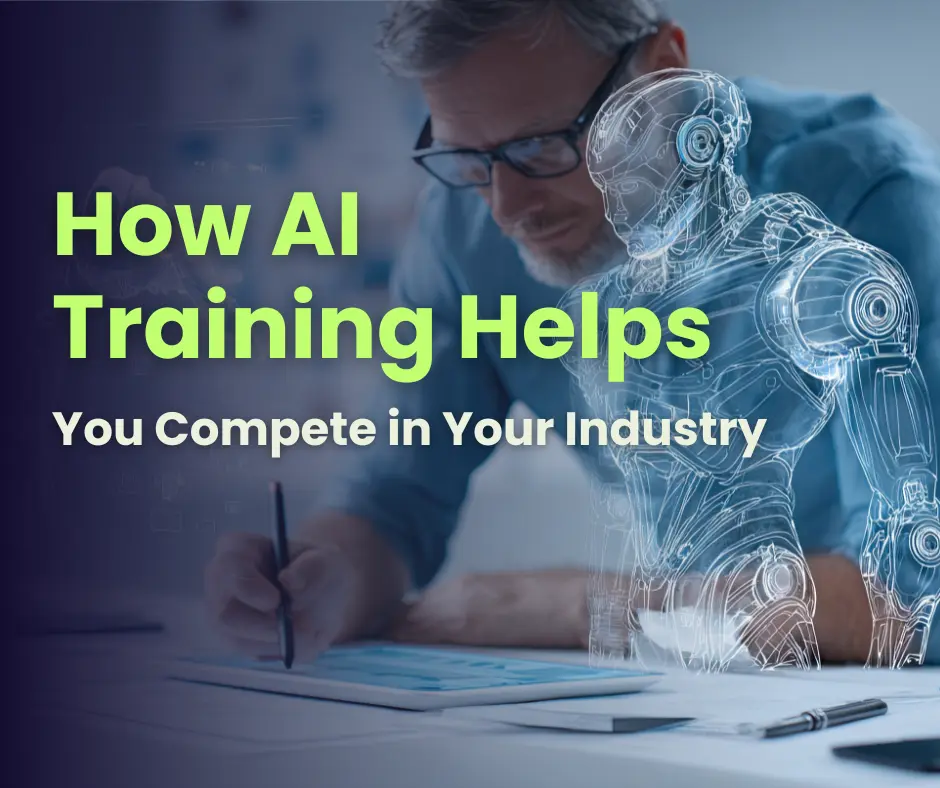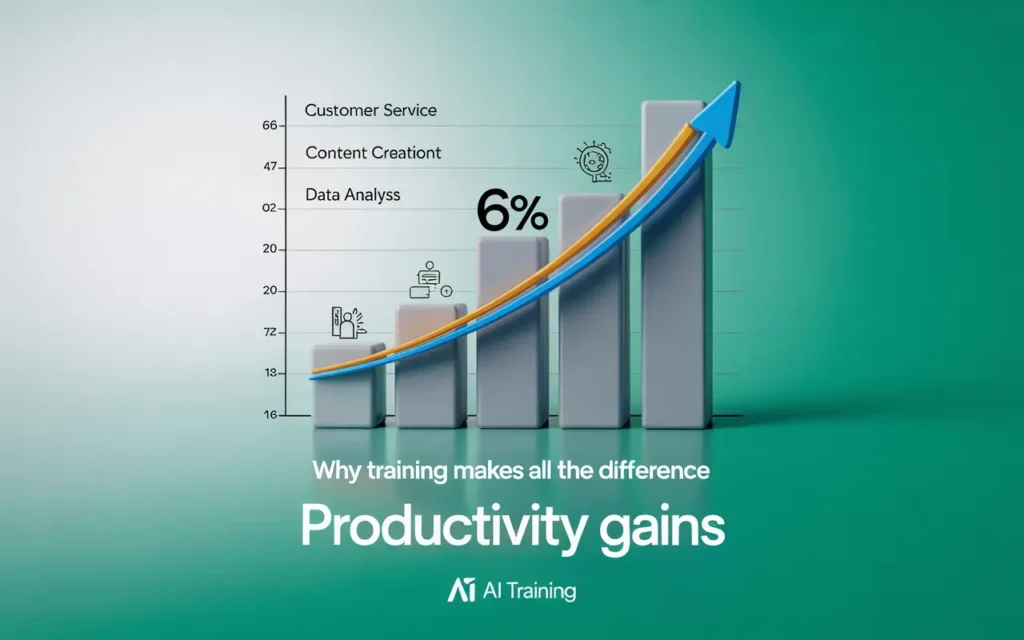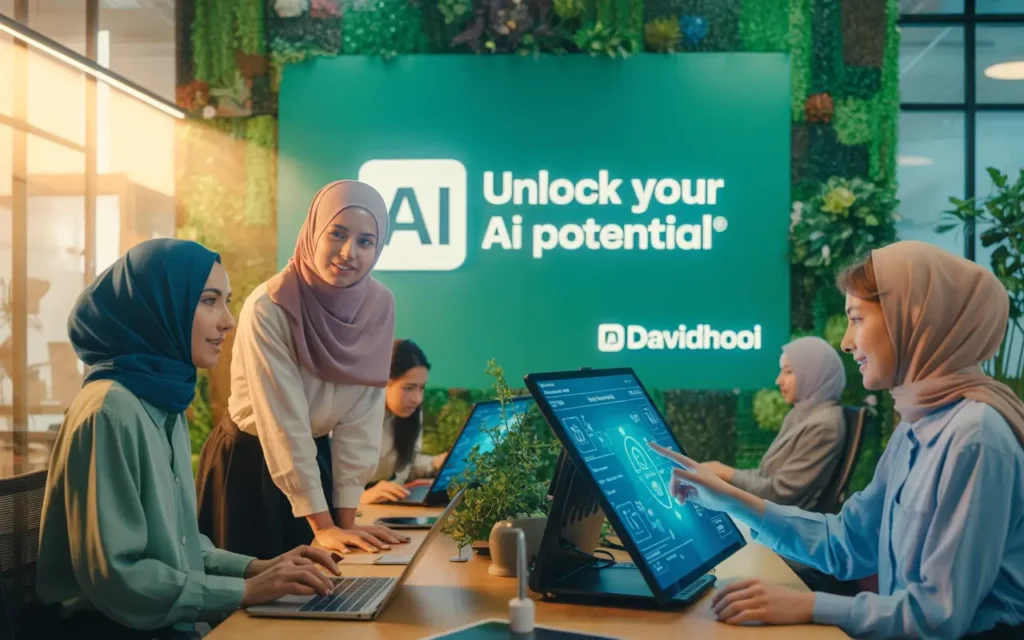
I’ve been watching companies across Southeast Asia struggle with the same question: “Everyone’s talking about AI, but how do we actually use it to get ahead?”
After 20 years in corporate environments from GSK to retail and logistics I’ve seen this pattern before. New technology arrives, everyone gets excited, then most companies fumble the implementation because they focus on the wrong things.
Here’s what I’ve learned: AI training isn’t about teaching your team to use fancy tools. It’s about transforming how your people think and work so your business can compete in ways that weren’t possible before.
Let me show you what’s really happening out there, and more importantly, how you can avoid the mistakes that 74% of companies are making right now.
The Reality: Most Companies Are Getting This Wrong
Last month, I spoke with a manufacturing CEO in Malaysia who told me, “We bought all these AI subscriptions, but nothing’s changed. People aren’t using them, and when they do, we don’t see any difference.“
Sound familiar?
Here’s the uncomfortable truth: only 39% of people globally who use AI at work have gotten AI training from their company. Meanwhile, 66% of business leaders say they wouldn’t hire someone without AI skills.
That’s a massive disconnect.
Even worse, Forbes says 31% of employees are actively sabotaging AI efforts because they’re scared of losing their jobs. When your people are working against you instead of with you, no amount of fancy technology will help.
But here’s what gives me hope: the companies getting this right are seeing incredible results. And the approach isn’t complicated it’s just different from what most people expect.
What Success Actually Looks Like
Let me share some examples from companies that figured this out.
Walmart transformed its entire operation by focusing on training people, not just buying technology. They taught their teams how to use AI for supplier negotiations (68% success rate now), route optimization (saved 30 million driving miles), and customer service. The result? 22% growth in e-commerce and a 26% increase in earnings per share.
But here’s the key: they didn’t start with complex algorithms. They started with practical applications that made people’s jobs easier.
A financial services company in Kuwait reduced its credit evaluation time from 4-5 days to under an hour. Not because they bought better software, but because they trained their people to work alongside AI instead of being replaced by it.
Siemens cut unplanned downtime by 50% and increased production efficiency by 20%. Their secret? They taught factory workers how to interpret AI insights and act on them proactively. The workers became smarter, not redundant.
Notice the pattern? In every case, the focus was on empowering people, not replacing them.
Why Training Makes All the Difference

Here’s something I learned during my time in pharmaceuticals: you can have the best technology in the world, but if your people don’t know how to use it effectively, you’re just wasting money.
AI is the same way.
When companies invest properly in training, they see productivity gains of 66%. Customer support teams handle 13.8% more inquiries per hour. Business professionals write 59% more documents per hour. Some organizations are getting the equivalent of 47 years of productivity improvements in concentrated timeframes.
But the companies that just buy AI tools and hope for the best? They’re part of the 74% that struggle to see any value at all.
The difference comes down to three things:
Understanding what AI can actually do for your specific business. Not general use cases you read about online, but practical applications for your industry, your processes, your challenges.
Teaching people to work with AI, not against it. This means addressing fears directly, showing them how AI makes their work more interesting and valuable, not threatening.
Building it into your culture gradually. You can’t transform a company overnight, but you can start with small wins that build confidence and momentum.
Industry-Specific Applications That Actually Work
Let me break this down by industry, because generic advice doesn’t help anyone.
Manufacturing and Production
If you’re in manufacturing, AI training should focus on predictive maintenance, quality control, and supply chain optimization. I’ve seen companies reduce equipment failures by 35% just by training their maintenance teams to interpret AI insights properly.
The key is teaching your people to think proactively instead of reactively. When a machine starts showing early warning signs, trained workers can address issues before they become expensive problems.
Financial Services and Banking
For financial services, the biggest opportunities are in fraud detection, risk assessment, and customer service. Real-time fraud detection can now happen in under 50 milliseconds, but only if your team knows how to configure and monitor these systems properly.
Credit scoring becomes 40% more accurate when human expertise combines with AI analysis. But your people need to understand what the AI is telling them and how to act on those insights.
Healthcare and Medical Services
In healthcare, AI training focuses on diagnostic assistance, treatment planning, and administrative efficiency. Medical imaging analysis can reduce diagnostic errors by 95%, but doctors and technicians need training to use these tools effectively.
Administrative tasks like claims processing see a 90% reduction in errors when staff are properly trained on AI-powered systems.
Retail and E-commerce
For retail, it’s all about personalization, inventory management, and customer experience. AI-driven personalization can generate 35% of your revenue (look at Amazon), but your marketing and sales teams need to understand how to create and optimize these systems.
Inventory optimization reduces holding costs by 15%, but your supply chain team needs training to interpret demand forecasting and adjust accordingly.
The Skills Gap Is Your Opportunity

Here’s something most business leaders don’t realize: the skills gap everyone’s worried about is actually your biggest competitive opportunity.
While your competitors are struggling to find “AI experts,” you can train your existing team to become AI-enabled experts in your specific business.
Think about it: who understands your customers better a data scientist you hired last month, or your sales manager who’s been working with clients for five years? Who knows your production processes better an AI consultant, or your floor supervisor who’s been running those lines for a decade?
The answer is obvious. Your people already have the domain expertise. They just need to learn how to amplify it with AI.
Different roles need different training approaches:
Your leadership team needs to understand AI strategy, ROI measurement, and change management. They don’t need to know how to code, but they need to make smart decisions about implementation and resource allocation.
Your operational teams need hands-on training with specific AI tools that relate to their daily work. Customer service reps learning AI-powered chat assistance, accountants using AI for data analysis, marketers leveraging AI for content creation.
Your technical teams need deeper training on AI implementation, integration, and optimization. But they also need to understand the business context so they’re building solutions that actually matter.
Getting Started: A Practical Approach
Based on my experience helping companies across Southeast Asia, here’s how to approach artificial intelligence training without overwhelming your organization:
Start with education, not tools. Before anyone touches an AI system, they need to understand what AI can and cannot do. This removes fear and sets realistic expectations.
Pick one department and one use case. Don’t try to transform your entire company at once. Choose a department that’s open to change and a use case where success is easy to measure.
Focus on making work easier, not different. The best AI implementations don’t change how people work—they make existing work faster, more accurate, and more enjoyable.
Measure productivity, not usage. Don’t just track how many people are using AI tools. Track whether they’re actually getting better results in less time.
Build internal champions. Identify people who get excited about AI and train them to help their colleagues. Peer-to-peer learning is more effective than top-down mandates.
The Cost Reality
Let me be honest about costs because this is usually the first question I get.
For small and medium enterprises, expect to spend $1,000-$5,000 per person for comprehensive training. That might sound like a lot, but compare it to hiring new “AI experts” at premium salaries.
For larger organizations, the per-person cost drops to $400-$1,000, but you’re looking at bigger total investments. The good news is that enterprise-scale implementations usually see faster ROI.
The real question isn’t whether you can afford AI training—it’s whether you can afford to fall behind while your competitors get ahead.
Southeast Asia: The Perfect Testing Ground
Here’s why I’m excited about AI adoption in Southeast Asia: we have less legacy infrastructure to work around, younger workforces that adapt quickly, and growing digital economies that reward innovation.
Countries like Indonesia and Vietnam are showing 42% AI adoption rates. Malaysia is investing $2.2 billion in AI infrastructure. Thailand is projecting a ฿114 billion AI market by 2030.
But adoption rates don’t tell the whole story. The companies that combine adoption with proper training are the ones creating sustainable competitive advantages.
This region has 700 million people, high mobile penetration, and cultural acceptance of technological progress. We’re perfectly positioned to leapfrog more established markets—if we focus on training our people properly.
What This Means for Your Business
If you’re a CEO, manager, or business owner reading this, you have a choice to make.
You can wait for AI to become “easier” or “more proven.” You can hire expensive consultants to implement systems your team doesn’t understand. You can buy AI tools and hope they magically improve your business.
Or you can invest in corporate team building and training your people to work with AI effectively, starting with practical applications that solve real problems in your business.
The companies choosing the second path are seeing 1.5x higher revenue growth and 3.7x ROI from their AI investments. They’re not getting lucky they’re getting strategic about human-AI collaboration.
The competitive window is closing. While you’re reading this, your competitors might be training their teams to work with AI more effectively.
The question isn’t whether AI will transform your industry it’s whether you’ll be leading that transformation or scrambling to catch up.
Ready to give your team the AI skills they need to compete? The companies winning aren’t waiting for perfect conditions. They’re starting now, learning fast, and scaling systematically.
Because in the age of AI, the most important competitive advantage isn’t having the best technology it’s having the best-trained people using that technology effectively.

